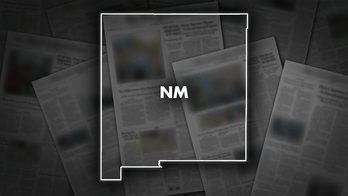Races to watch as the battle for Senate control heats up
Key races tightening in the final days of the campaign
The race for Senate control is expected to be close. It may just hinge on a seat or two either way.
Here is a primer on phenomena to track as the Senate returns roll in.
Republicans hold a 54-46 seat edge in the Senate now. Two independents, Sens. Bernie Sanders, I-Vt., and Angus King, I-Maine, caucus with the Democrats.
Approximately a third of the Senate is up for reelection every two years. 2010 was a big year for Senate Republicans – even though they fell short of control. As a result, Republicans are defending 24 of the 34 seats in play this cycle. 2010 was not only a “Republican” year in Senate contests but a midterm year. Those two factors work directly against the GOP this year as freshman, Republican senators who won in 2010 now find themselves on the ballot in battleground states in a presidential election year.
Consider the competitive races facing Sens. Kelly Ayotte, R-N.H., Pat Toomey, R-Pa., and Ron Johnson, R-Wis. All are in states that are barnburners at the presidential level. This factor alone is one of the reasons the GOP majority is at risk. The electorate is a lot different in the presidential atmosphere of 2016 compared with the Tea Party-infused playing field of the 2010 midterm.
The other issue is that Republicans only have one seat they may be able to seize from Democrats. That seat’s in Nevada as Rep. Joe Heck, R-Nev., runs against Democrat Catherine Cortez Masto. Senate Minority Leader Harry Reid, D-Nev., is quitting. Otherwise, Republicans play defense across the board.
At first blush, many expected freshman Sens. Rob Portman, R-Ohio, and Marco Rubio, R-Fla., to struggle as they campaigned in swing states. But Portman appears to be up in the Buckeye State against former Democratic Ohio Gov. Ted Strickland. Rubio has a slightly more competitive contest against Rep. Patrick Murphy, D-Fla. But polls show Rubio leading.
After finishing his presidential bid, Rubio planned to retire from the Senate after a solitary term. But GOP leaders coaxed Rubio to run again and the senator reversed course. With the Senate so close, the draft Rubio maneuver alone could be enough for GOPers to hold the Senate. One could also make the argument that Portman’s strong performance against the apparently ineffective Strickland effort could serve as a GOP firewall against a possible Democratic takeover.
By the same token, Rep. Todd Young, R-Ind., was expected to coast to victory to succeed retiring Sen. Dan Coats, R-Ind. That was until Democrats mustered a recruitment coup of their own by persuading former Sen. Evan Bayh, D-Ind., to run. Bayh replaced former Rep. Baron Hill, D-Ind., as the prospective Democratic nominee. Bayh is as good a nominee as the Democrats can get to run against Young. But that doesn’t mean it’s been easy. Bayh’s faced criticism about why he left the Senate in the first place and just how much time he spends in the Hoosier State.
Presidential turnout will certainly influence Senate races in New Hampshire, Pennsylvania, Wisconsin and North Carolina. Democrats had been fretting about how a Philadelphia transit strike could disproportionately impact urban, Democratic voters, but the strike has ended just in time. Pennsylvania is a must-win state for both presidential campaigns. Philadelphia is a Democratic stronghold. Diminished turnout in Philadelphia could boost Toomey in his race against challenger Democrat Katie McGinty.
In the Badger State, Johnson has earned traction in recent days in a rematch against the man he defeated in 2010, former Sen. Russ Feingold, D-Wis. House Speaker Paul Ryan, R-Wis., barnstormed the state with Johnson to campaign. Johnson’s seen his numbers climb in the past few weeks.
Some Republicans criticized Sen. Richard Burr, R-N.C., for purportedly starting his race late against Democrat Deborah Ross. Watch to see how the Tar Heel state votes for president. Since the direct election of senators began more than 100 years ago, North Carolina voters almost always align their votes for Senate and President.
The ticket-splitting exception came in 1968 when North Carolina voted for President Richard Nixon and reelected Sen. Sam Ervin, D-N.C. Ironically, it was Ervin who would go on to chair the panel which probed Nixon and Watergate.
Sen. Roy Blunt, R-Mo., is locked in a tight contest against Democrat Jason Kander. Missouri is a Republican state. But people would have given you a quizzical look a year ago if you predicted Blunt would be in worse shape at this stage of the cycle than Rob Portman.
Kander is a moderate Democrat. Some voters view Blunt as being too much of a “D.C. insider.” Moreover, there’s precedent for Blunt losing contests he should win. In 2006, Blunt served as the House majority whip and was poised to succeed former House Majority Whip Tom DeLay, R-Texas, who faced legal trouble. Former House Speaker John Boehner, R-Ohio, then defeated Blunt for DeLay’s post in an upset. Blunt later gave up the whip post and ran for the Senate in 2010.
There are at least two Senate seats where we may not get the result Tuesday night: Louisiana and Georgia. Both require runoffs if no candidate secures 50.1 percent. The Louisiana runoff is scheduled for Dec. 10. The Georgia runoff comes Jan. 10. The latter could pose a problem as the 115th Congress starts Jan. 3. Thus, it’s entirely possible the Senate could start with one party in charge, and either move to a tie or flip depending on Georgia’s January outcome.
There is one non-election night issue that also demands attention. With Harry Reid retiring, Sen. Chuck Schumer, D-N.Y., is poised to step in to succeed the Nevada Democrat as Democratic leader. The only question is whether Schumer will be the majority leader or minority leader. Schumer long ago wrapped up the votes to take over for Reid when the Nevada Democrat announced he was stepping aside early last year.
Secondly, there could be a leadership contest between Senate Minority Whip Dick Durbin, D-Ill., and Sen. Patty Murray, D-Wash., for the number two job. Murray currently holds a lower-tier Senate Democratic leadership post.
Senate Democrats plan to hold their leadership elections on Nov. 16.





